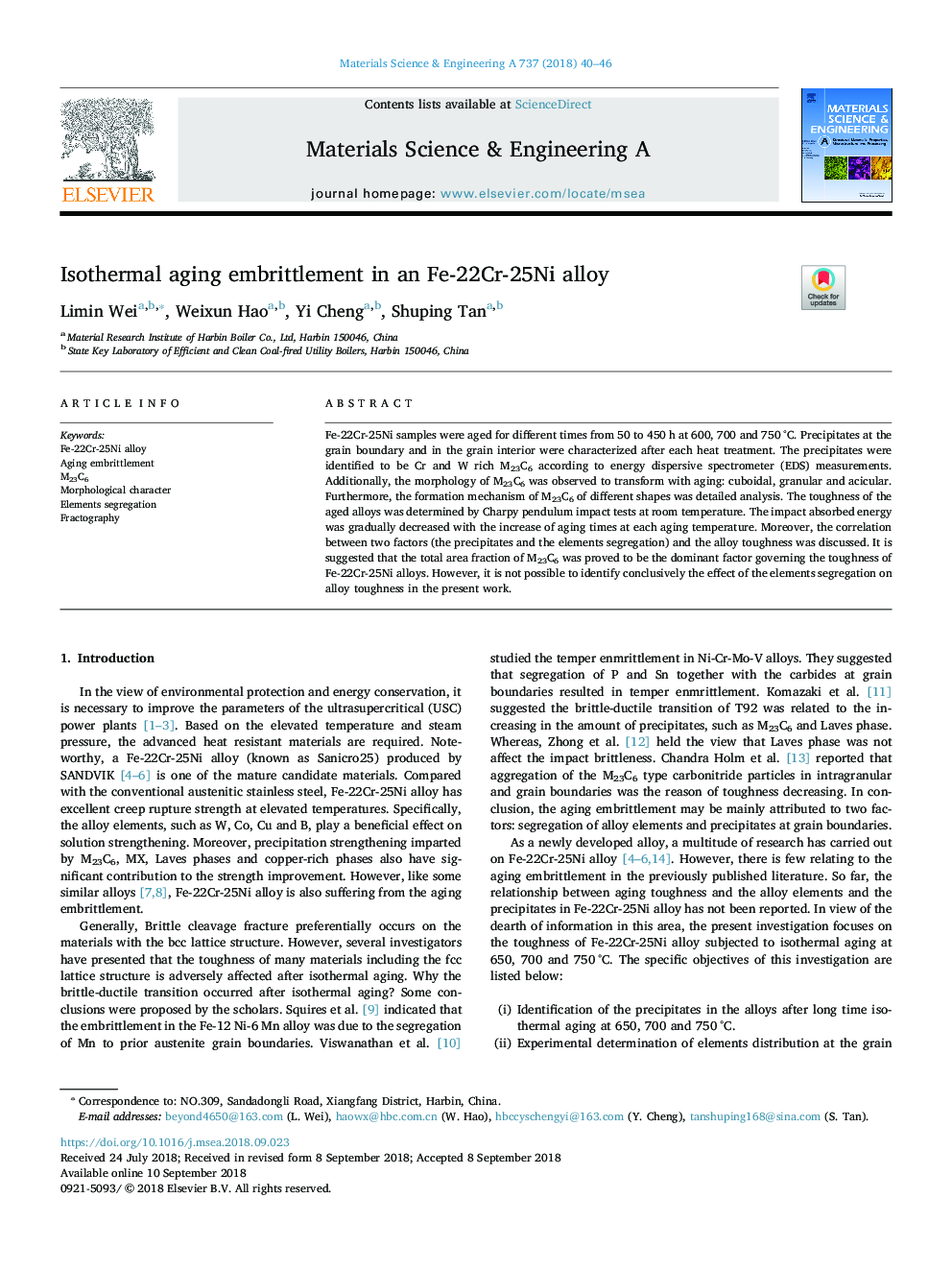| Article ID | Journal | Published Year | Pages | File Type |
|---|---|---|---|---|
| 10155883 | Materials Science and Engineering: A | 2018 | 7 Pages |
Abstract
Fe-22Cr-25Ni samples were aged for different times from 50 to 450â¯h at 600, 700 and 750â¯Â°C. Precipitates at the grain boundary and in the grain interior were characterized after each heat treatment. The precipitates were identified to be Cr and W rich M23C6 according to energy dispersive spectrometer (EDS) measurements. Additionally, the morphology of M23C6 was observed to transform with aging: cuboidal, granular and acicular. Furthermore, the formation mechanism of M23C6 of different shapes was detailed analysis. The toughness of the aged alloys was determined by Charpy pendulum impact tests at room temperature. The impact absorbed energy was gradually decreased with the increase of aging times at each aging temperature. Moreover, the correlation between two factors (the precipitates and the elements segregation) and the alloy toughness was discussed. It is suggested that the total area fraction of M23C6 was proved to be the dominant factor governing the toughness of Fe-22Cr-25Ni alloys. However, it is not possible to identify conclusively the effect of the elements segregation on alloy toughness in the present work.
Related Topics
Physical Sciences and Engineering
Materials Science
Materials Science (General)
Authors
Limin Wei, Weixun Hao, Yi Cheng, Shuping Tan,
